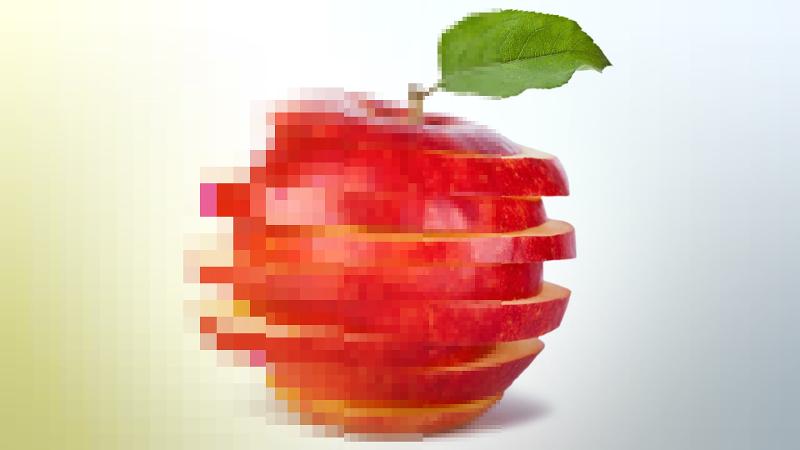Unveiling the Secrets of Teaching Computers to Recognize Changing Objects
When it comes to teaching computers to identify objects as they change shape, significant challenges remain. However, computer science researchers at the University of Maryland are taking a unique approach using everyday produce. By creating a dataset that showcases fruits and vegetables in various forms, including being peeled, sliced, or chopped, they are training machine learning systems to recognize objects in dynamic states. Let's delve into the fascinating world of object recognition and explore how this innovative dataset is paving the way for advancements in computer vision.
The Challenge of Teaching Computers to Recognize Changing Objects
Understanding the difficulties in teaching computers to identify objects as they change shape
Teaching computers to recognize objects as they change shape is a complex task that has posed challenges for computer science researchers. While significant advancements have been made in computer vision, the ability to interpret objects in dynamic states remains elusive for artificial intelligence (AI) systems.
Unlike humans who can easily visualize how a sliced apple or peeled orange would look compared to a whole fruit, machine learning models require extensive data to learn how to interpret these transformations. This necessitates the development of innovative methods to help computers imagine unseen scenarios, similar to how humans do.
In this subheading, we will explore the unique challenges involved in teaching computers to recognize changing objects and how researchers are addressing these obstacles.
Introducing the Chop & Learn Dataset
Exploring the dataset that trains machine learning systems to recognize produce in various forms
To tackle the problem of teaching computers to recognize changing objects, computer science researchers at the University of Maryland have developed the Chop & Learn dataset. This dataset is designed to train machine learning systems to identify produce in different forms, including when it is being peeled, sliced, or chopped into pieces.
The Chop & Learn dataset was created by filming researchers chopping 20 types of fruits and vegetables in seven different styles. The videos were captured from four different angles, ensuring a comprehensive dataset that accounts for variations in food-prepping styles and individual preferences.
By utilizing this dataset, machine learning models can learn to recognize objects in dynamic states, enabling them to accurately identify produce even when it undergoes transformations. In the following sections, we will delve into the details of the Chop & Learn dataset and its implications for advancing computer vision.
Unleashing the Power of Object Recognition
Understanding the importance of recognizing objects as they undergo different transformations
Recognizing objects as they undergo different transformations is crucial for building long-term video understanding systems. It enables computers to interpret visual data accurately and understand the context of dynamic scenes.
For instance, in the field of autonomous vehicles, the ability to recognize objects in various states can enhance safety features by identifying potential hazards or obstacles on the road. Similarly, in the domain of public safety, the accurate identification of objects in dynamic states can aid officials in identifying potential threats.
Moreover, the advancements in object recognition can have broader applications in fields such as 3D reconstruction, video generation, and summarization and parsing of long-term videos. These applications can revolutionize industries and contribute to the development of innovative technologies.
In the upcoming sections, we will explore the potential impact of object recognition and how the Chop & Learn dataset contributes to its advancement.
Applications and Future Possibilities
Examining the potential applications and future developments enabled by the Chop & Learn dataset
The Chop & Learn dataset not only serves as a valuable resource for training machine learning systems but also opens up a world of possibilities for various applications.
In the short term, the dataset can contribute to advancements in image and video tasks such as 3D reconstruction, video generation, and summarization and parsing of long-term videos. These tasks are essential for understanding visual data and extracting meaningful insights from dynamic scenes.
Furthermore, the dataset's impact can extend to fields like driverless vehicles, where safety features can be enhanced by accurately recognizing objects in different states. Additionally, the dataset could play a role in the development of a robotic chef that can transform produce into healthy meals on command.
As researchers continue to explore the potential of the Chop & Learn dataset, we can anticipate exciting advancements in computer vision and the practical applications of object recognition.
Conclusion
The field of teaching computers to recognize changing objects presents significant challenges, but researchers at the University of Maryland are making strides with their innovative Chop & Learn dataset. By training machine learning systems to identify produce in various forms, including when it is being peeled, sliced, or chopped, they are paving the way for advancements in computer vision.
The Chop & Learn dataset not only enables accurate object recognition but also holds potential for applications in fields such as autonomous vehicles, public safety, and video understanding. As researchers continue to explore the dataset's possibilities, we can anticipate exciting developments in computer vision and the practical applications of object recognition.
FQA
What is the Chop & Learn dataset?
The Chop & Learn dataset is a collection of videos that showcases fruits and vegetables in various forms, allowing machine learning systems to recognize produce as it undergoes transformations such as peeling, slicing, or chopping.
Why is object recognition important?
Object recognition is crucial for building long-term video understanding systems and has applications in fields like autonomous vehicles and public safety. It enables computers to accurately interpret visual data and identify objects in dynamic states.
What are the potential applications of the Chop & Learn dataset?
The Chop & Learn dataset can contribute to advancements in image and video tasks such as 3D reconstruction, video generation, and summarization. It also holds potential for enhancing safety features in driverless vehicles and the development of robotic chefs.

